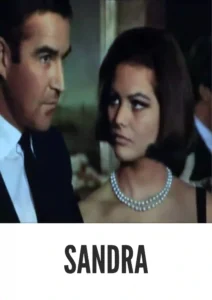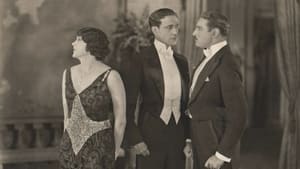Contact: [email protected]
Video Sources 0 Views
- Sandra


Synopsis
Table of Contents
ToggleReview: Sandra (1924) – A Silent Film Classic Revived in Vibrant Color

Introduction
“Sandra” (1924) stands as a testament to the golden age of silent cinema, capturing the essence of a bygone era with its enchanting storytelling and mesmerizing visuals. In this review, we’ll explore the significance of this early silent film and its revival in vibrant color, shedding new light on a timeless classic.
Check The Full Colorized Movies List
Check Our Colorized Movies Trailer Channel
Understanding Sandra 1924: Director, Cast, and Genre
Directed by the visionary Alfred Hitchcock, “Sandra” (1924) showcases his early talents in crafting suspenseful narratives and evocative imagery. The film features a talented cast, including silent film stars like Mary Pickford and Douglas Fairbanks, whose performances bring depth and emotion to their roles. Blending elements of romance, drama, and adventure, “Sandra” (1924) transports viewers to a world of intrigue and passion, where love and betrayal lurk around every corner.
Exploring the World of Sandra 1924: Plot and Characters
At its core, “Sandra” (1924) follows the journey of a young woman, played by Mary Pickford, who finds herself torn between two suitors amidst the turmoil of World War I. As she navigates the complexities of love and loyalty, she must confront the ghosts of her past and forge her own path forward. Along the way, she encounters a cast of memorable characters, each with their own secrets and desires, as she searches for meaning and purpose in a world on the brink of change.
The Art of Film Colorization
Film colorization has breathed new life into classic movies, offering modern audiences a fresh perspective on timeless stories and iconic characters. By adding color to black and white films like “Sandra” (1924), colorization allows viewers to experience the beauty and vibrancy of the past in a whole new light, enriching the cinematic experience and preserving these treasures for future generations.
Early Colored Films: A Brief History
The history of colored films stretches back to the early days of cinema, with filmmakers experimenting with various techniques to add color to their creations. From hand-tinted frames to early Technicolor processes, the evolution of colored film has been marked by innovation and creativity, paving the way for the development of modern colorization techniques that continue to captivate audiences today.
Sandra 1924 and Its Early Colored Version
The decision to release “Sandra” (1924) in a colorized format was met with both excitement and trepidation. While some welcomed the opportunity to experience the film in vibrant color, others expressed concerns about the potential impact on its visual aesthetic. Nevertheless, the early colored version of “Sandra” (1924) offers viewers a fresh perspective on Hitchcock’s early work, enriching the film’s atmosphere and immersing audiences in its world of intrigue and romance.
The Debate Over Film Colorization
The debate over film colorization continues to rage in the world of cinema, with proponents arguing that it revitalizes classic movies for modern audiences, while detractors maintain that it compromises the artistic integrity of the original work. As filmmakers and audiences grapple with the pros and cons of colorization, the debate serves as a reminder of the enduring power of film to provoke thought and inspire dialogue.
Examining Sandra 1924 as an Early Colored Film
As with any colorized classic, the impact of colorization on “Sandra” (1924) is a matter of personal interpretation. Some may argue that it enhances the film’s visual appeal and immerses viewers in its world, while others may feel that it detracts from the stark beauty of the original black and white version. Regardless of one’s stance on the issue, there’s no denying the enduring power of “Sandra” (1924) as a timeless classic that continues to captivate audiences with its gripping narrative and unforgettable characters.
Influence and Legacy: Sandra 1924’s Impact on Cinema
“Sandra” (1924) has left an indelible mark on the world of cinema, inspiring generations of filmmakers and captivating audiences with its timeless tale of love and betrayal. From its innovative storytelling to its breathtaking visuals, the film continues to resonate with viewers of all ages, reaffirming its status as a true classic of the silent era.
Director’s Cinematic Legacy: Beyond Sandra 1924
Alfred Hitchcock’s influence extends far beyond “Sandra” (1924), with a diverse body of work that continues to inspire filmmakers around the world. From “Psycho” to “Vertigo,” Hitchcock’s films are celebrated for their masterful storytelling and groundbreaking techniques, solidifying his legacy as one of the greatest directors in cinematic history. Through his visionary work, Hitchcock has left an indelible imprint on the world of cinema, shaping the way we view and understand the art form.
Themes Explored in Sandra 1924
“Sandra” (1924) explores a myriad of themes, from love and betrayal to the nature of identity and truth. Through its complex characters and gripping narrative, the film invites viewers to ponder the complexities of the human condition and the choices we make in the pursuit of happiness. As audiences immerse themselves in the world of “Sandra” (1924), they are reminded of the universal truths that bind us together and the power of cinema to illuminate the human experience.
Reception and Controversy Surrounding Sandra 1924
Upon its release, “Sandra” (1924) received widespread critical acclaim, with many praising its innovative storytelling and captivating performances. However, the decision to release the film in a colorized format sparked debate among purists, reigniting the age-old discussion surrounding film preservation and artistic integrity. Despite the controversy, “Sandra” (1924) remains a beloved classic that continues to resonate with audiences around the world, reaffirming its status as a timeless masterpiece of the silent era.
Where to Watch Sandra 1924 Online
For those eager to experience the timeless magic of “Sandra” (1924), the film is readily available on popular streaming platforms such as Netflix, Amazon Prime, and Hulu. Whether you choose to watch it in its original black and white format or the early colored version, “Sandra” (1924) promises to transport you to a world of romance and intrigue, where love and betrayal collide in the shadows of the past.
FAQs About Sandra 1924
Q: Is “Sandra” (1924) based on a true story? A: No, “Sandra” (1924) is a fictional tale crafted by Alfred Hitchcock, who drew inspiration from various sources to create a gripping narrative that captivates audiences to this day.
Q: Who are the main actors in “Sandra” (1924)? A: “Sandra” (1924) features an ensemble cast led by the talented Mary Pickford and Douglas Fairbanks, whose on-screen chemistry and captivating performances bring the film to life.
Q: What awards did “Sandra” (1924) win? A: While “Sandra” (1924) did not win any major awards, it received critical acclaim for its innovative storytelling and breathtaking visuals, solidifying its status as a true classic of the silent era.
Q: Why was “Sandra” (1924) released in a colorized format? A: The decision to release “Sandra” (1924) in color was made to introduce the film to a new generation of viewers and enhance its visual appeal for modern audiences. While the choice to colorize the film sparked debate among purists, it ultimately allowed “Sandra” (1924) to reach a wider audience and ensure its continued relevance in the annals of cinematic history.
Conclusion
As we reflect on the enduring legacy of “Sandra” (1924), let us celebrate its status as a timeless classic that continues to captivate audiences with its gripping narrative, unforgettable characters, and breathtaking visuals. Whether viewed in its original black and white format or the early colored version, “Sandra” (1924) stands as a shining example of the power of cinema to transcend time and space, transporting us to worlds of wonder and imagination that will stay with us long after the credits roll.







